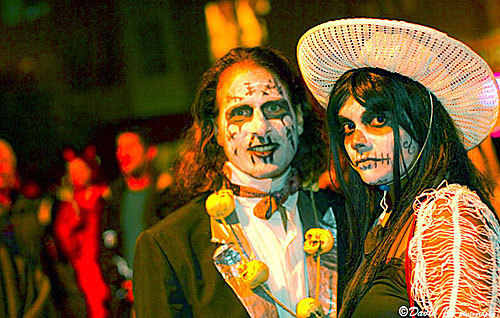In Philip Levine’s “Baby Villon”, the title is presumably a reference to Francos
Villon, a man born in poverty that becomes a poet, thief, and vagabond. The speaker
sees himself in Villon and views him as a brother united in struggle. However the
character of Villon is not merely one person, but is instead a symbolic figure representing
many oppressed peoples who encompass Villon’s anarchic spirit.
The person that the speaker interacts with has several aspects, the first
of those being historical figure of Francos Villon. All of the other aspects of
this character follow the archetype that Villon sets as an impoverished and oppressed
figure with a rebellious nature. Secondly we see him as representing all
oppressed peoples who share Villon’s spirit. The first four lines describe “Villon”
as being a variety of contrasting minorities who are being robbed. These include
a white person in Bangkok, a black person in London, a Jew in Paris, and an
Arab in Paris. Still “Everywhere and at all times… he fights back”.
Thirdly we see “Villon’s” Jewish nature. Phillip Levine, who I would
consider to be the speaker, is of Jewish descent that lived in America during
World War II. One of the aspects of the “Villon’s” character is a Jew who
presumably lived in Germany or a German occupied country during WWII. By doing
this Levine is connecting himself to “Villon”. We first see this aspect in line
eleven when he refers to the war in North Africa and states that during this
time he lost his father and his brother. Lines 13-16 are possibly a reference
to how Jewish homes and businesses were vandalized and destroyed in the time leading
up to the Holocaust. The windows of the bakery were smashed in, but in defiance
“Villon” still ate the glass-filled bread until his mouth bled. It also
describes both the speaker and “Villon” as sharing the same black hair.
His fourth aspect is very
connected to his third, which is “Villon” as family member to the. In line ten
the speaker calls his father “Villon’s” uncle, and later in the second to last
line calls him his imaginary brother and cousin. I don’t believe that he is
saying that he is literally his cousin, but is referring to the bond that the
two of them share. We see this
symbolically with their black hair. In line lines 19-20 Villon touches his
hair and tells him that he should never despair and calls his hair “the stiff
bristles that guard the head of the fighter”. Their kiss symbolizes the speaker
coming to understand “Villon”.
The poem ends with the line: “Myself made otherwise by all his pain”. This line
explains the importance of “Villon” to the speaker and to us. The pain and oppression
that “Villon” went through had a significant influence on who the speaker is as
a person. We also can draw strength from his rebellious attitude in the face of
oppression. Villon calls us to stand up and fight, especially when it is the
hardest to do so.
Works Cited
Levine, Phillip. "Baby Villon".
Works Cited
Levine, Phillip. "Baby Villon".


